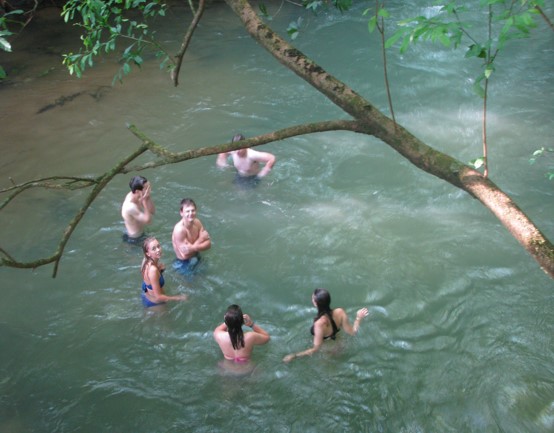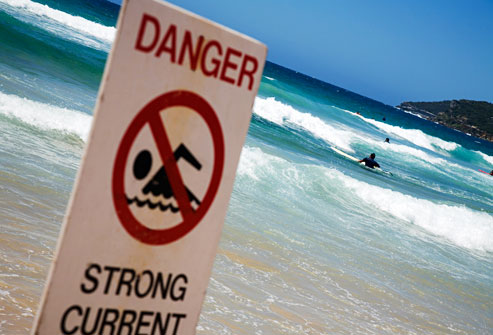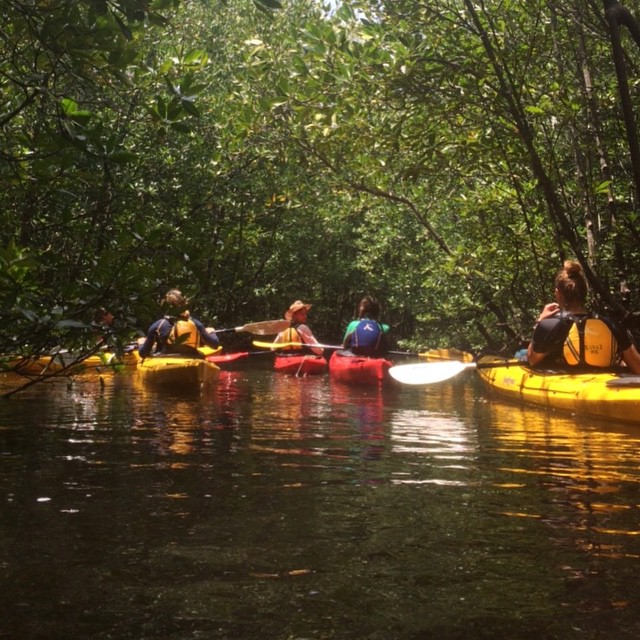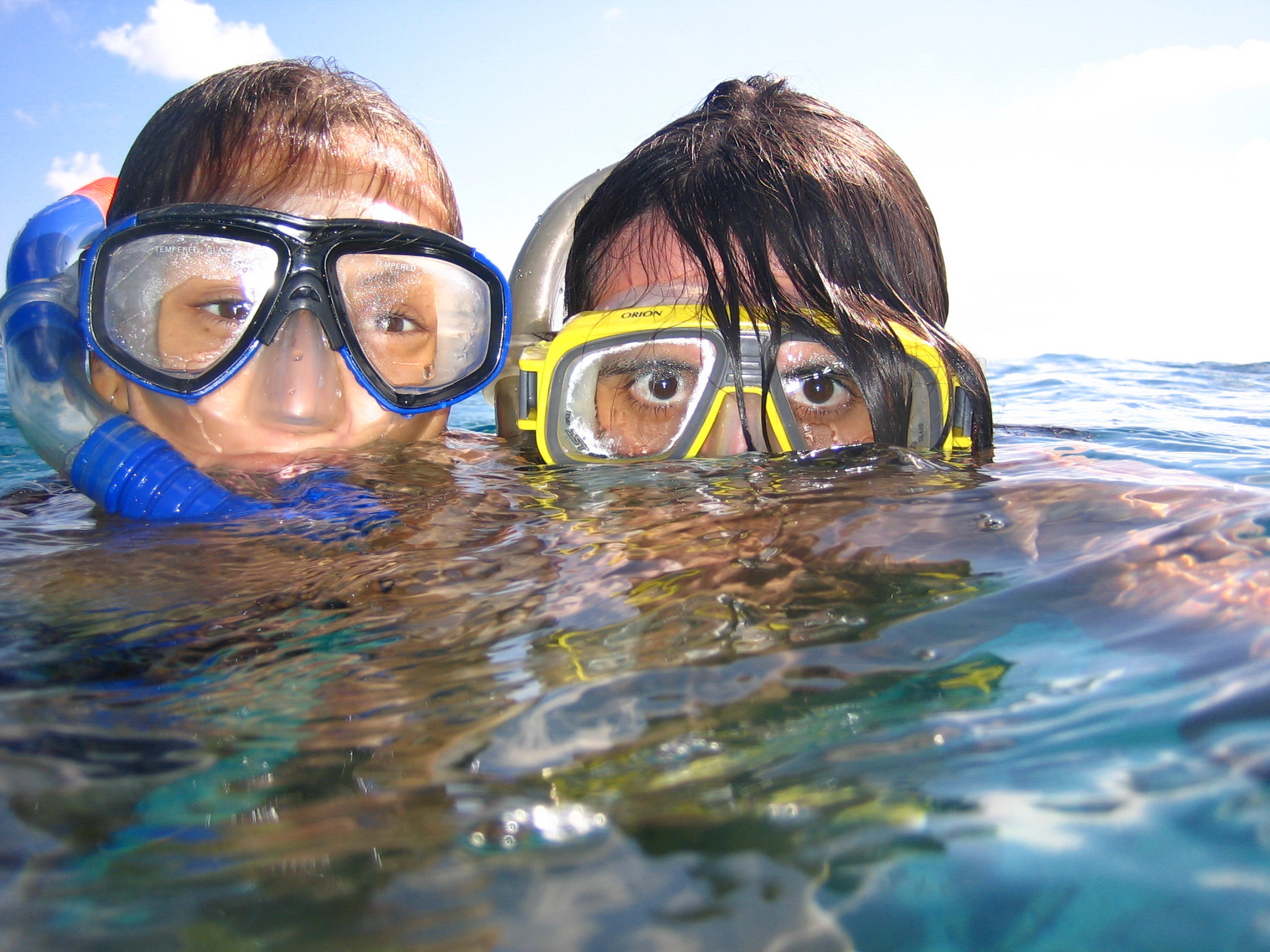Recreational Water Activities Abroad
/by Bill Frederick and Captain Rick Miller
Some of the more frequent recreational activities in which students engage while abroad involve water and swimming. These can be as organized program activities or on student free time. Understanding the variables regarding swim environments, supervision, ability level, lifeguarding and policies, can help a program manage risk and reduce the likelihood of a drowning or near drowning while abroad.
Google searches usually turn up tragic events only if the story found its way into a newspaper. A Google search for drowning events in international education programs doesn’t tell us definitively how many students drowned during any given time period. A recent search does show that in 2016 – 2017, teenagers on international education programs drowned in swimming pools, in the ocean, in shallow rivers and hotel lagoons in Europe, Africa, Latin America and the Caribbean.
Supervision
In some of the instances there was no supervision, but in some cases there was a high ratio of staff to students (better than 4 – 1). Having untrained adults in close proximity is not an effective water safety strategy as illustrated by easily found YouTube videos of unconscious drowning youngsters bumping right up against adults at water parks who do not recognize that there is a problem.
An ongoing informal survey of secondary school global programs that do allow swimming on international programs shows that very few programs have formal policies. It is left up to chaperones to decide if swimming may occur in any particular venue or circumstance. There are no requirements for the chaperones themselves to have any expertise in recreational water safety. They are not usually required to indicate whether or not they can themselves swim.
Lifeguarding
Lifeguarding courses available in the United States are intended to train lifeguards for swimming pools or waterparks. Most “certified life guards” don’t know anything about rip currents, surf beachfronts or river hydrology. Most lifeguards who work on beaches with any kind of current or surf, showed up with their YMCA/American Red Cross/American Lifeguard Association certification and then, after passing a much more rigorous swimming assessment, were taught the skills they might actually have to use. The United States Lifesaving Association (USLA), which sets the standard for open water supervision and surf rescue, does not offer training or certification to individuals. They certify “agencies” which usually means a township that has surf beaches and a professional lifeguarding staff, which needs to conduct trainings and maintain lifeguarding operations that comply with the USLA standards. The USLA certification does not apply to individuals so even if you had staff who’d been open water/surf beach life guards, they do not carry any current certification for that activity.
Assessing Swimming Environments
There are many, many possible swimming environments: ocean beaches with varying degrees of surf (waves), rivers whose hazards change depending upon the level of water, waterfalls, quarries, kettle ponds, volcanic lakes, hotel pools, waterparks, etc. Rip currents, keeper holes, foot entrapments, strainers, air temperature, water temperature, visibility, potentially dangerous marine life, pollutants, etc. are a few of the many potential hazards that need to be competently assessed by people with skills and experience. It is more than just common sense.
Swimming Assessment
When gauging swimming ability, it’s important to ask who is doing the assessment and the criteria for determining the assessment.
I’ve twice been obliged to rescue university faculty who had clearly indicated that they were competent swimmers prior to an in water swimming assessment. Without any hesitation they had jumped into the water and proceeded to drown.
In one post rescue conversation, the professor logically pointed out that he had never been swimming before, so he didn’t know that he couldn’t swim. In a semester long collegiate program, one of the staff (a former Olympic trials contender) liked to swim from shore out to a number of shallow shipwrecks. Two students convinced him that, despite his warnings of strong currents, they were very strong swimmers. One claimed a history of being a lifeguard. One claimed to have passed “the Navy Seal swim test”. The staff person had to rescue both of them swimming one at a time onto a buoy and then swimming back in to get a motorboat to pick them up. Swimming self-assessments are wholly unreliable.
In one of the teenager drowning stories, the program pointed to the fact that they had a waiver signed by the victim’s parents stating that he knew how “to swim”. The language around swimming in that document was general and very much open to interpretation. Some families who have spent extensive time in shallow water lakes, pools or beaches are doing what they called “swimming”. When asked if their child can swim they rightly believe that their child frequently goes swimming and therefore they know how to swim. This is qualitatively different from someone who can get from point A to point B in water over their heads using intuitive movements (“doggy paddle”) while keeping their face as far from the water as possible. This is also qualitatively different from someone who puts their face in the water and can demonstrate proficiency in a number of recognized competitive strokes (freestyle or crawl, breaststroke, backstroke or butterfly).
It is recommended that programs that allow swimming should assess swimming ability prior to departure. Students should be asked about their ability individually out of earshot of the group so as to avoid possible embarrassment. This allows the assessors to gauge the self-assessment skill of the student and also allows the assessors to have the student wear a personal flotation device (PFD) if appropriate. The assessment should be conducted in an environment where it is easy to visualize the student being assessed and where the assessors can get to the student very quickly if need be. The assessment is not intended to gauge endurance. A typical exercise would be to have the student swim 25 yards using freestyle and 25 yards using the stroke of their choice and then tread water for 60 seconds. What is being assessed is skill level, confidence and comfort in the water.
A commonly reported pitfall is simply making a distinction between swimmer and non-swimmer and feeling pressure to assess anyone who can traverse the 50 yards as a swimmer.
There should be at least 4 distinctions:
Level 1 – non-swimmer – cannot travel 50 yards
Level 2 – adequate swimmer - can travel 50 yards and stay afloat for 60 seconds, but does not put face in the water between each stroke or is unable to demonstrate proficiency in any competitive strokes.
Level 3 – proficient swimmer – can demonstrate proficiency in freestyle, i.e., put their face in the water and coordinate breathing between strokes.
Level 4 – competitive swimmer – demonstrates proficiency in freestyle and other competitive strokes and has been training with a swim team at some point during previous year.
As a result of the assessment, there should be difference limitations imposed on students depending upon their swimming ability. In a hotel pool, a level 1 swimmer can only swim in a pool with 100% supervision with a PFD on. Adequate swimmers may only swim with 100% supervision.
In a more challenging environment the school may require both non-swimmers and adequate swimmers to wear PFDs at all times with a specified level of trained supervision.
PFDs
Personal flotation devices come in 5 types. (From Wikipedia)
Type I PFD’s – Off-shore life jackets: These are the best devices for all waters, open ocean, rough seas or remote water where rescue may be slow in coming. This type of device is also used as abandon-ship life jackets for commercial vessels and all vessels carrying passengers for hire.
Type II PFD’s – Near-shore buoyant vests: For general boating activities, calm inland waters or where there is a good chance for fast rescue.
Type III PFD’s – Flotation aids: For general boating or specialized activity that is marked on the device (such as water skiing, canoeing, kayaking, hunting etc.). These devices are best for calm inland waters or where there is a good chance for fast rescue.
Type IV PFD’s – Throwable devices: these devices are designed to be thrown to persons in distress. Often this type of device includes boat seat cushions, ring buoys and horseshoe buoys. These are not designed to be worn and should be supplemented by a wearable PFD. Both the throwable and wearable devices should be readily available for emergency situations.
Type V PFD’s – Special use devices: Used only for special uses and conditions. Typically these are labeled with their limits of use. Commonly these flotation devices are used for canoeing/kayaking, boardsailing, deck suits, work vests for commercial vessels and man over-board situations and law enforcement.
An important part of having and using a PFD is the fit. PFDs should fit comfortably and snug. It is important to try the PFD on before use. It should not ride up your body. To test whether the PFD has the correct buoyancy for your weight, when lying on your back in water and relaxing, the PFD should keep your chin well above water. If it does not, a device with higher buoyancy is needed.
The fit of the PFD is as critical as having the right type device for the right circumstance. We were recently asked by a client to look into a cave tubing activity they had scheduled for a program in Belize. We spoke to participants from previous trips who’d felt that it was actually less exciting than they’d hoped. The cave was simple (no alternative passages) and the water was slow moving without any whitewater. However, a quick search turned up that a 52 year-old nurse drowned during the activity in 2008 when her tube overturned after brushing up against the wall. The cause of death was drowning. The program was using (and still is using) type II life vests that are best used when a quick rescue is anticipated.
In low and middle-income countries in particular, most adventure activities, including those that involve water (rafting, sea kayaking, surfing, etc.) will not be conducted at a similar standard as they likely would in the U. S. In part regulation, regulation enforcement and torte law are all under-developed. Providers are not concerned about being sued and expensive safety equipment and training detracts from the bottom line.
Conducting recreational water based activities overseas is a common and usual activity. However, while rare, drowning events make up a significant proportion of international education program fatalities. The risks are not always immediately apparent. A competent recreational water safety strategy involves ensuring that all the pieces are in place.





